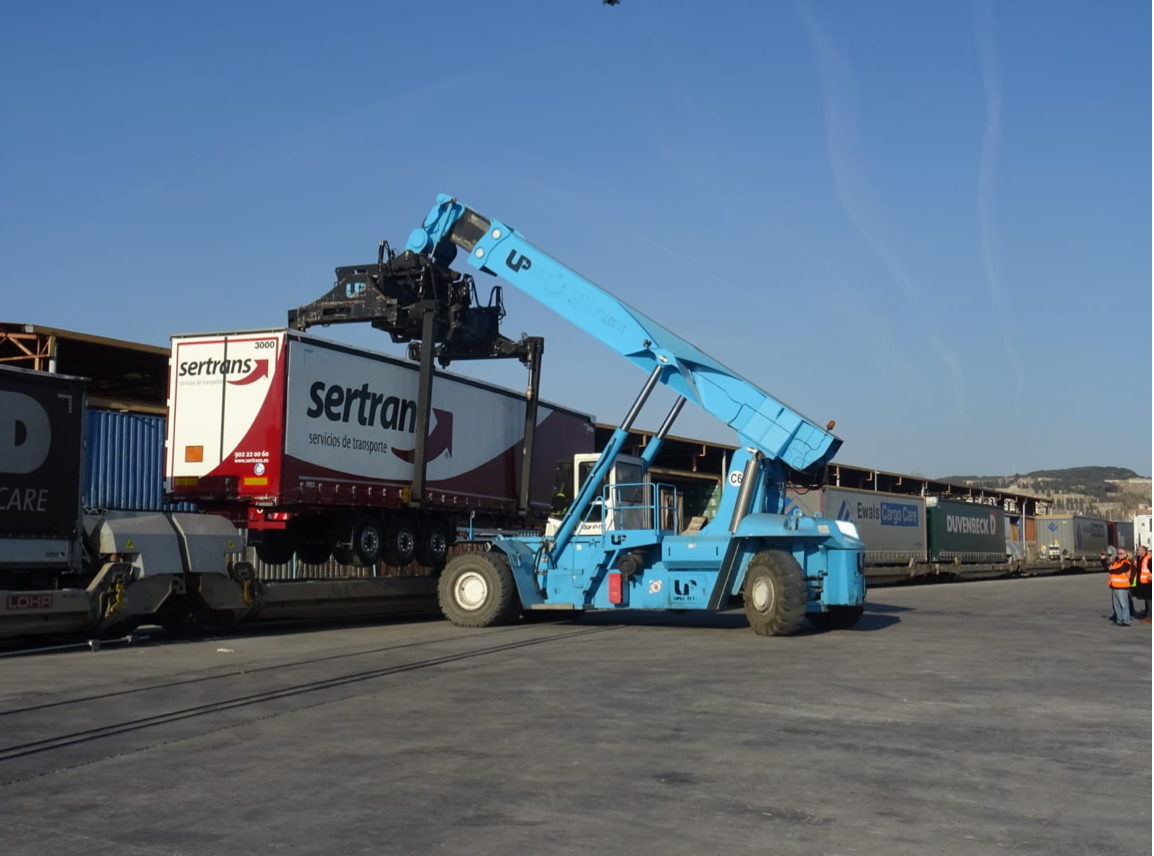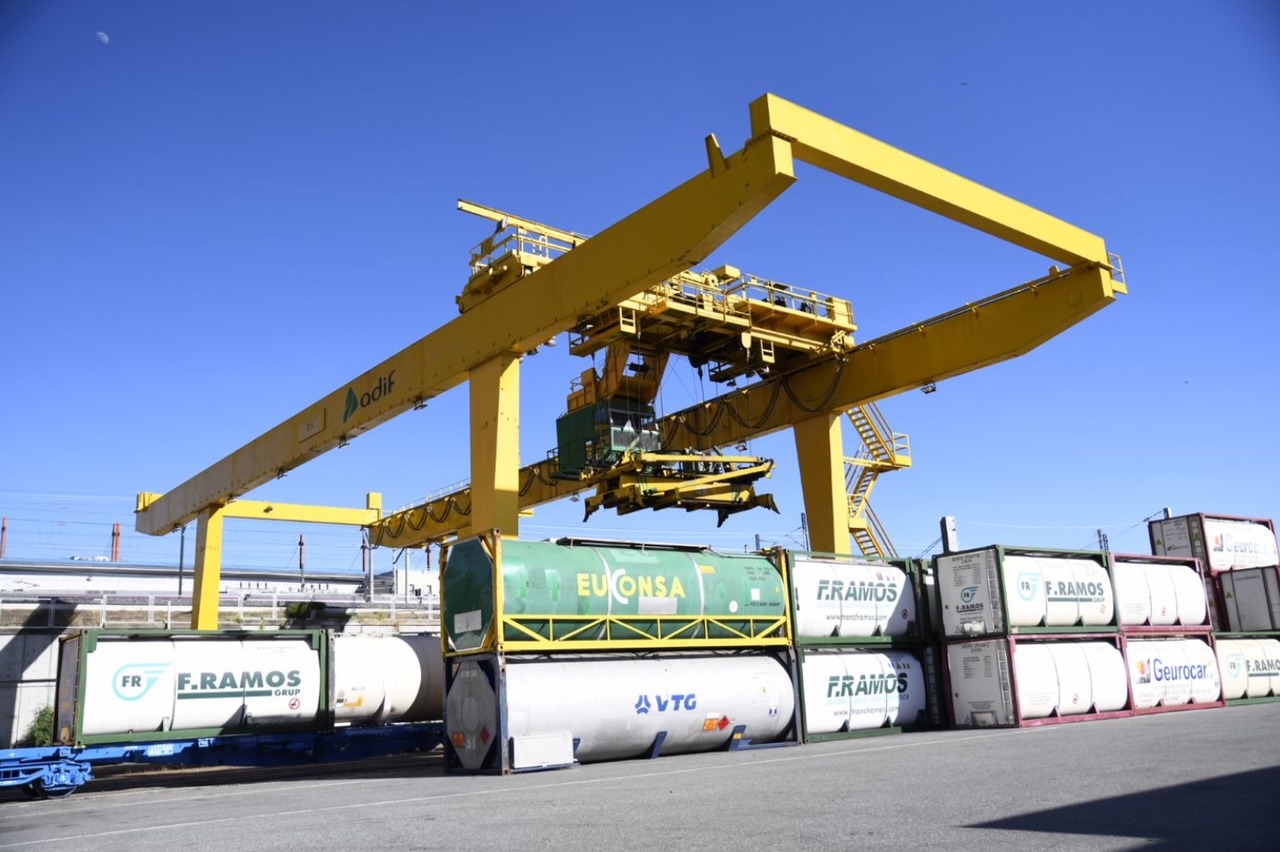8. Value creating: Multimodal Transportation
Europe wants to promote a green economic model, based on sustainability and digitization, axes of the recovery strategy after the pandemic. The goal is to become the first climate-neutral continent by 2050, as stated in the European Green Deal (Green Deal). One of the areas where it will affect the most is transport.
Meeting such targets will only be possible by making intense efforts on two different fronts. Firstly, by improving efficiency in each mode, to reduce the consumption of resources and the emissions generated. Secondly, by stimulating the combined use of modes, i.e., intermodal and multimodaltransportation, so that the door-to-door transport chain is optimized to make it more efficient through visibility and traceability.
The EU's interest in shifting part of the freight of goods from road to rail dates to a decade ago. A target was set then for 2030 to shift 30% of road freight transport over more than 300 kilometres to modes such as rail or inland waterways, and by 2050, more than 50%. However, the European Court of Auditors warned recently that this target was not on track, with 75% of goods being moved by road across the EU.
Rail freight transport is a key element in moving towards a new sustainable mobility and plays a determining role in the current context of the globalized economy. It is an efficient, safe, intermodal, high-capacity mode with a low level of CO2 emissions - according to the European Environment Agency, CO2 emissions from rail transport are 3.5 times lower per tonne-kilometre than those from road transport.These, broadly speaking, are just some of its main competitive advantages.
In Spain, rail transport moves less than 4% of total goods, while road transport moves more than 96%. In 2020, the train transported 14.3 million tons, 16.1% less than in the previous year. To achieve a sustainable business model in the coming years that increases the share of freight transport and its integration with other modes of transport, ADIF, the manager of the railway infrastructure, is immersed in various actions that seek to recoverintermodal traffic. These take the form of the development of high-capacity terminals, infrastructures that enhance efficiency and boost connections with Europe and collaboration in reducing CO2 emissions, as well as the implementation of operational improvements.

Illustration: Reachstaker loading a semi truck on the convoy (soure: JC Salmeron)
In this context and in line with the proposals established in Axis 6 of the Spanish MITMA 2030 safe, sustainable, and connected mobility strategy, called "Intermodal and Intelligent Logistics Chains", work is being done on the “Merchandise 20-30” initiative. It is intended to promote rail freight transport as the backbone of multimodal logistics chains, from the dual perspective of the post-Covid-19 economic recovery and the achievement of the objectives of the decarbonization of transport.
Multimodal transport is a type of transport that moves goods through several modes, whether by land or water, and for which only a single document or contract is required. It is crucial for multimodal or logistics service providers (LSP) to match the requirements of customers with its capability to provide service, and to acknowledge customer value criticalitybased on the idea that value consists of a comparison between benefits that a customer received and costs that a customer pays.
Soms value creating examples to support the use of multimodal transport are:
- A reduction in operation time and total costs from the optimum use of each mode of transport for each phase of the journey.
- A better capacity utilization resulting from optimum usage of each mode
- The use of a single transport document, that have preference when passing through customs.
- Increased safety in door-to-door services.
- Reduced energy consumption and CO2 emissions
Multimodal transportation, can be considerated as a sustainable and efficient freight transport approach, that can substantially help reduce Europe's dependence on imported oil and reduce pollution, noise, infrastructure costs and the number of accidents. The industry’s significant contribution to greenhouse gas (GHG) emissions calls for a modification of current behaviours, involving a shift from mere compliance with environmental regulations to proactive attitudes in companies and government's environmental strategies.
From a social standpoint, multimodal transportation is fully aligned with the reduction of the negative impact of transport activity. The social value of this mode of transport is hogh. The social awareness profile of the logistic operators engaging with multimodal transport enhances a social self-concept. This is another key aspect in a sustainable vision of the use of the transport network.
In addition, digitization enables multimodal transportation to structurally mature, becoming increasingly attractive for shippers, transporters and customers. Digital services based on track and trace solutions bring synchromodalconcept of transport: the organized, optimal, efficient, flexible, and “just in time” combination of two or more modes of transport. As seamless real-time information flows are becoming further integrated with multimodal transportation, it is possible to improve, change or restructure the supply chain according to the specific needs of each customer.

Illustration: Crane in Abronigal (Source: ADIF)
For the railway freight terminals, the comprehensive use of Terminal Operation Systems (TOS), IoT devices and 5G communication network has various advantages:
- The opportunity to offer new digital services - i.e. related to load consolidation, reduce empty vehicle trips or handled dynamic disturbances - and real time synchronization with other transport legs´ IT systems,
- To improve the organization of the services provided at the terminal, which translate into improving customer response times, reducing terminal operating costs and minimizing inefficiencies measured in excessive waiting times, operational and administrative processes, incidents etc.
- To improve the planning and operation processes of the terminal and the rest of the agents in the freight transport chain when fostering the interoperability of these systems with the Collaborative Digital Platform. This relates to the electronic exchange of information on B2B services - Business to Business - such as B2A services - Business to Administration - improving the traceability of goods and means of transport.
In the case of Spain, SIMPLE is Collaborative Platform System that will help to increase the intermodal transport adding value to the exchange process and making possible the syncromodality among the different modes of transport.
Author: ADIF - Javier Garcia Fortea
.
- Hits: 2614
